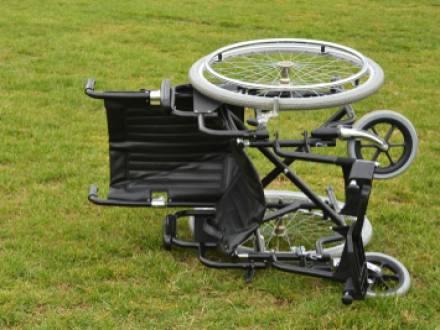 Stars
StarsAre Falls in Nursing Homes Considered Negligence in Maryland?
 Falls in nursing homes are not always considered negligence under Maryland law. However, they can be if the facility fails to meet its duty of care. Nursing homes have a legal responsibility to provide a safe environment and appropriate supervision to prevent avoidable injuries. When a resident suffers a fall and someone else is at fault, it may be grounds for a negligence claim. If your loved one was injured, speak to a Columbia, MD nursing home neglect lawyer to understand your options.
Falls in nursing homes are not always considered negligence under Maryland law. However, they can be if the facility fails to meet its duty of care. Nursing homes have a legal responsibility to provide a safe environment and appropriate supervision to prevent avoidable injuries. When a resident suffers a fall and someone else is at fault, it may be grounds for a negligence claim. If your loved one was injured, speak to a Columbia, MD nursing home neglect lawyer to understand your options.
How Are Falls Prevented in Maryland Nursing Homes?
Maryland law requires nursing homes to develop individualized care plans that include fall prevention strategies. Under COMAR 10.07.02.60, facilities must assess each resident’s needs and update care plans at least every three months or whenever the resident’s condition changes. These plans often include supervision levels, assistive devices, and medication reviews to reduce fall risks.
Staffing also plays a crucial role in fall prevention. According to COMAR 10.07.02.19, nursing homes must provide a minimum of three hours of bedside care for each resident daily. The facility must also maintain sufficient staffing to meet each resident’s needs. This ensures residents are monitored and assisted when moving, especially if they are known fall risks.
Proper maintenance is also important. While specific fall-related building codes are addressed in broader safety requirements, Maryland law expects nursing homes to maintain hazard-free environments. This includes safe flooring, proper lighting, and functioning handrails. Together, these measures help reduce preventable falls.
When Is a Nursing Home Liable for a Fall in Maryland?
A nursing home may be liable if it failed to act with reasonable care, violating residents’ rights as outlined in Health–General Article § 19-343. Common examples of when a nursing home could be held responsible for a fall include:
-
Failure to respond promptly to call buttons or alarms, leaving a resident to attempt to move on their own
-
Allowing clutter or spilled liquids to remain on the floor, creating tripping or slipping hazards
-
Improper or unsafe use of wheelchairs, walkers, or bed rails, such as not locking wheels or positioning aids incorrectly
-
Moving residents without assistance or proper lifting techniques, causing unsteady transfers from bed to chair or vice versa
-
Neglecting to communicate fall risks during staff shift changes, leading to uninformed or unprepared caregivers
-
Improper use of sedatives or medication changes without adequate monitoring, increasing dizziness or balance issues
Can You Sue for Compensation if a Nursing Home Fall Results in Injury?
If a fall results in injury and was caused by the facility’s negligence, the injured party can pursue compensation. This may include coverage for medical bills, physical therapy, and pain and suffering. In some cases, punitive damages may be available, especially if the nursing home demonstrated a pattern of neglect. However, keep in mind that Maryland law imposes a time limit for filing these claims. Under Courts and Judicial Proceedings § 5-101, you generally have three years from the date of injury or discovery of the injury to file a lawsuit.
Call Our Columbia, MD Nursing Home Neglect Attorney for a Free Consultation
If your loved one was hurt in a nursing home fall, I can help. For over 12 years, I have helped families take action against neglectful facilities, and I give each case my full, personal attention. I also work on contingency, which means you only pay me if I recover compensation for you.
Call 240-744-1600 to speak with an aggressive, compassionate Howard County, MD nursing home neglect lawyer at Serafini Law and schedule your free consultation. My phone line is open 24/7.





